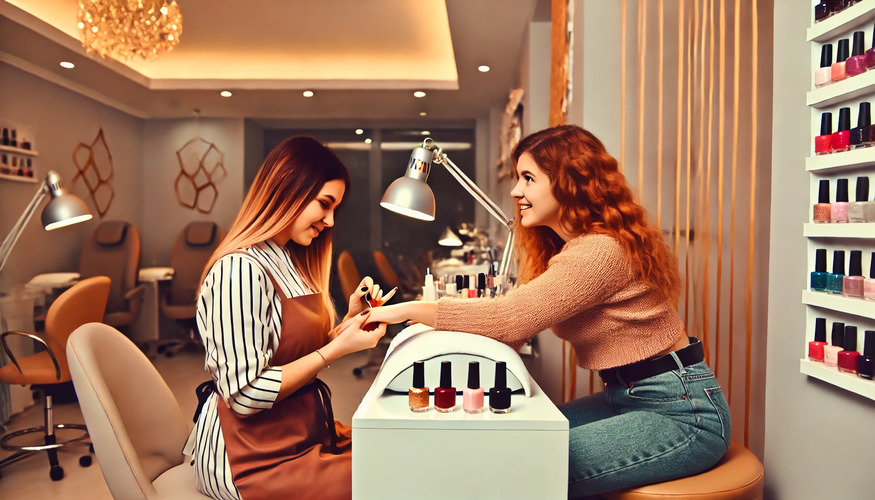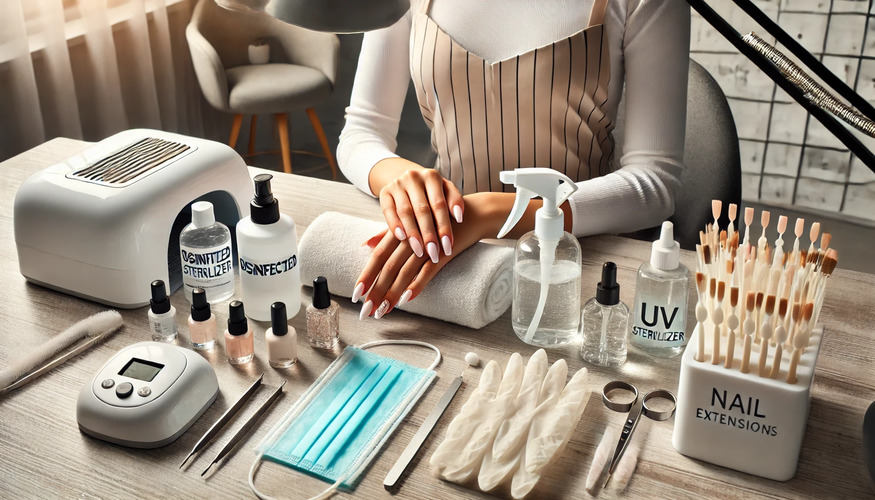Nail extensions are a popular procedure in the nail industry to create long, well-groomed and elegant nails. However, like any other cosmetic procedure, nail extensions require strict safety and hygiene measures to avoid infections and other health problems. In this article, we will look at the basic safety and hygiene aspects to consider when getting nail extensions.
Preparing for the procedure
Before starting the nail extension procedure, you need to make thorough preparations. This includes:
1. Surface cleanliness. The workplace should be clean and disinfected. All tools and materials should be placed on a clean surface to avoid dirt and germs.
2. Organisation of tools. All tools, including files, brushes, tweezers and others, should be sterile and ready for use. It is recommended to use disposable tools or disinfect them after each client.
3. Protective equipment. The technician should use protective equipment such as gloves and a mask to prevent contact with potentially dangerous substances and infections.
Master's hygiene
The master's personal hygiene plays an important role in ensuring the safety of the procedure. The basic rules include:
1. Clean hands. Before starting work, the master must thoroughly wash his hands with soap and treat them with an antiseptic.
2. Short nails. The master must monitor the condition of his nails, they must be short and clean to avoid accidental damage to the client.
3. Clean clothes. The master's work clothes must be clean and comfortable, it is advisable to use a special robe or uniform.
Disinfection and sterilization of instruments
Disinfection and sterilization of instruments are key aspects of safety when extending nails. Unsterilized instruments can become a source of infection, so their processing must be especially thorough.
It is recommended to use autoclaves, ultraviolet sterilizers or special disinfection solutions to sterilize instruments. Files, buffs and other disposable materials must be disposed of after use on each client to prevent cross-infection.
After each client, the work surface must be wiped with a disinfectant. This will help maintain a high level of hygiene and safety in the salon.
Client hygiene
Before the procedure, the client must wash their hands thoroughly to reduce the risk of infection. The technician should carefully examine the condition of the client's nails. If signs of fungal infections or other diseases are found on the nails, the procedure should be postponed and the client should be advised to consult a doctor.

Use of quality materials
The quality of the materials used directly affects the safety of the procedure. Therefore, it is extremely important to use only proven materials from reliable manufacturers. Inexpensive or counterfeit components may contain harmful chemicals that can cause allergic reactions or other health problems. Choose quality and certified products to ensure the safety of yourself and the client.
Caring for extended nails
After the nail extension procedure, the client should be given recommendations for caring for extended nails:
1. Avoid contact with aggressive chemicals. It is recommended to use gloves when doing household chores.
2. Visit the technician regularly. Regular corrections will help keep your nails in good condition and prevent possible problems.
3. Maintain hand hygiene. Regular hand washing and using moisturizers will help keep your hands and cuticles healthy.
Safety and hygiene during nail extensions are important aspects that cannot be ignored. Following simple rules will help avoid infections and other problems, providing clients with beautiful and healthy nails. Attention to detail and the use of quality materials are the key to a successful procedure and satisfied clients.
Read also: Nail extension mistakes and how to avoid them
